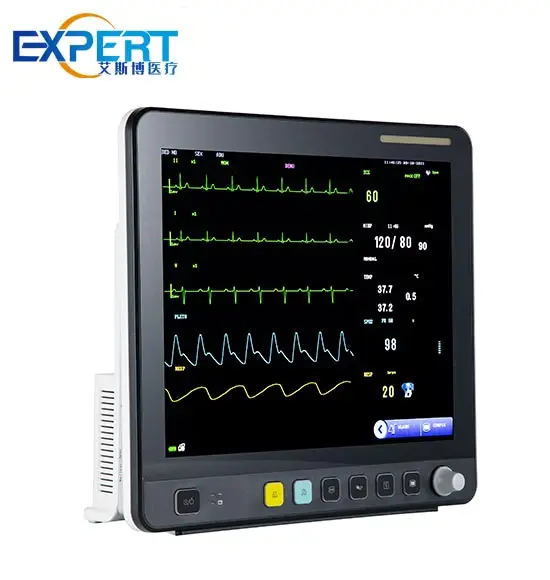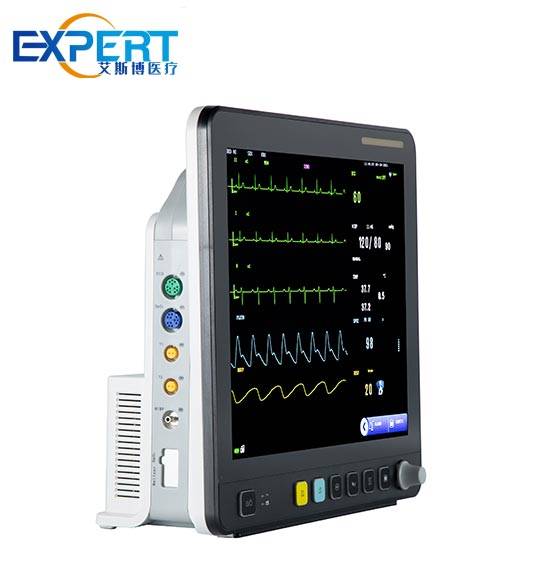Адрес
304 North Cardinal St.
Дорчестер-центр, Массачусетс 02124
Часы работы
С понедельника по пятницу: с 7:00 до 19:00.
Выходные: 10.00 - 17.00
Адрес
304 North Cardinal St.
Дорчестер-центр, Массачусетс 02124
Часы работы
С понедельника по пятницу: с 7:00 до 19:00.
Выходные: 10.00 - 17.00

Veterinary monitoring equipment plays a crucial role in diagnosing and treating animals, ensuring their health and well-being during surgeries.
Добро пожаловать в мой блог!
Прежде чем мы погрузимся в контент, я бы хотел, чтобы вы присоединились ко мне на моих платформах социальных сетей, где я делюсь большим количеством идей, взаимодействую с сообществом и публикую обновления. Вот как вы можете связаться со мной:
Фейсбук:https://www.facebook.com/profile.php?id=100071234835011
LinkedIn:https://www.linkedin.com/company/74943205/admin/dashboard/
Ютуб:www.youtube.com/@shandongexpertmedicalequip4695
ТикТок:www.tiktok.com/@expertmedical
Теперь давайте начнем наше путешествие вместе. Надеюсь, вы найдете здесь контент проницательным, интересным и ценным.

In today’s veterinary practice, the importance of reliable and accurate monitoring equipment cannot be overstated. Veterinary monitoring equipment plays a crucial role in diagnosing and treating animals, ensuring their health and well-being during surgeries, medical procedures, and routine check-ups. Choosing the right equipment for your practice involves understanding the specific needs of your clinic, the types of animals you treat, and the various features and capabilities of modern veterinary monitoring devices. This comprehensive guide will help you navigate the selection process, providing insights into the key factors to consider, the different types of equipment available, and how to integrate these tools into your practice effectively.
Veterinary monitoring equipment encompasses a range of devices used to track and measure the physiological parameters of animals. These devices are essential for monitoring vital signs such as heart rate, respiratory rate, blood pressure, temperature, and oxygen saturation. Common types of veterinary monitoring equipment include:
Reliable monitoring equipment is vital for several reasons:
Here is a table summarizing some common types of veterinary monitoring equipment and their primary uses:
| Equipment Type | Primary Use | Ключевая особенность |
|---|---|---|
| Multiparameter Monitor | Comprehensive monitoring of multiple parameters | Monitors heart rate, respiratory rate, SpO2, BP, temperature |
| ECG Machine | Monitoring cardiac activity | Displays heart rhythms and detects abnormalities |
| Пульсоксиметр | Measuring blood oxygen saturation | Provides real-time SpO2 levels |
| Капнограф | Monitoring CO2 levels in exhaled air | Measures end-tidal CO2, helps in assessing ventilation |
| Blood Pressure Monitor | Measuring blood pressure | Non-invasive BP measurement, essential for hypertensive animals |
Different veterinary practices have varying needs based on the types of animals they treat and the services they offer. For instance, a practice specializing in small animals like cats and dogs may have different equipment requirements compared to a clinic focusing on large animals such as horses and livestock.
Consider the types of physiological parameters you need to monitor. Multiparameter monitors are versatile and can measure multiple vital signs simultaneously, making them ideal for comprehensive monitoring. However, specialized equipment like ECG machines or capnographs may be necessary for specific diagnostic procedures.
The accuracy and reliability of the monitoring equipment are paramount. Look for devices with proven accuracy and consistent performance. Equipment that meets industry standards and has been tested in clinical settings is preferable.
Veterinary staff should be able to operate the equipment efficiently. User-friendly interfaces, clear displays, and intuitive controls are essential features that can enhance the usability of the monitoring devices.
Portability is crucial for mobile veterinary services and practices with limited space. Durable equipment can withstand the rigors of daily use and is particularly important in large animal practices where the equipment may be exposed to more demanding conditions.
Modern veterinary practices often use integrated systems to streamline operations. Equipment that can seamlessly integrate with electronic medical records (EMRs), practice management software, and other diagnostic tools can improve workflow efficiency and data accuracy.
Budget constraints are a reality for many veterinary practices. While it is important to invest in high-quality equipment, it is equally crucial to balance cost with functionality. Consider both the initial purchase price and the long-term maintenance costs when making your decision.
To assist you further in your decision-making process, here is a comparative table of some popular veterinary monitoring equipment brands, highlighting their key features and advantages:
| Бренд | Equipment Type | Ключевая особенность | Преимущества |
|---|---|---|---|
| VetSpecs | Multiparameter Monitor | High-resolution touchscreen, battery backup | Comprehensive monitoring, easy to use |
| Cardell | Blood Pressure Monitor | Non-invasive, accurate BP measurement | Reliable, user-friendly interface |
| Bionet | ECG Machine | Portable, wireless connectivity | High accuracy, easy integration |
| Masimo | Пульсоксиметр | Advanced signal processing, compact design | Accurate SpO2 readings, durable |
| Edan | Капнограф | Real-time CO2 monitoring, compact size | Reliable CO2 measurements, portable |

Proper training is essential to ensure that veterinary staff can effectively use the monitoring equipment. Manufacturers often provide training resources, including user manuals, online tutorials, and on-site training sessions.
Regular maintenance and calibration of the equipment are crucial to ensure accurate readings and extend the lifespan of the devices. Follow the manufacturer’s guidelines for routine checks and servicing.
Integrate the monitoring equipment into your practice’s workflow to enhance efficiency. Ensure that all staff members are familiar with the operation and troubleshooting procedures of the equipment.
Выбор правильного ветеринарное контрольное оборудование is a critical decision that can significantly impact the quality of care you provide to your patients. By considering factors such as your practice’s needs, the types of monitoring parameters required, accuracy, ease of use, portability, integration capabilities, and cost, you can select equipment that enhances your diagnostic and treatment capabilities.
Investing in high-quality veterinary monitoring equipment not only improves patient outcomes but also enhances the overall efficiency and reputation of your practice. Stay informed about the latest advancements in veterinary technology and continuously evaluate your equipment needs to ensure you are providing the best possible care for your animal patients.
Что ветеринарное контрольное оборудование?
Veterinary monitoring equipment includes devices used to track and measure the physiological parameters of animals, such as heart rate, respiratory rate, blood pressure, temperature, and oxygen saturation.
Why is veterinary monitoring equipment important?
Reliable monitoring equipment is essential for accurate diagnosis, surgical safety, post-operative care, and emergency interventions, ensuring the health and well-being of animal patients.
What factors should I consider when choosing veterinary monitoring equipment?
Consider your practice’s needs and specialization, the types of monitoring parameters required, the accuracy and reliability of the equipment, ease of use, portability, integration capabilities, and cost.
How do I ensure my staff can effectively use the monitoring equipment?
Provide proper training through resources such as user manuals, online tutorials, and on-site training sessions offered by the equipment manufacturers.
What are some common types of veterinary monitoring equipment?
Common types include multiparameter monitors, ECG machines, pulse oximeters, capnographs, and blood pressure monitors.
How often should veterinary monitoring equipment be maintained and calibrated?
Follow the manufacturer’s guidelines for regular maintenance and calibration to ensure accurate readings and extend the lifespan of the devices.
Can veterinary monitoring equipment integrate with other systems in my practice?
Yes, many modern veterinary monitoring devices can integrate with electronic medical records (EMRs), practice management software, and other diagnostic tools to improve workflow efficiency and data accuracy.
What are the benefits of using multiparameter monitors in veterinary practice?
Multiparameter monitors provide comprehensive monitoring of multiple vital signs simultaneously, offering a complete overview of the animal’s health and enhancing diagnostic accuracy.
How do I balance cost with functionality when choosing ветеринарное контрольное оборудование?
Evaluate the initial purchase price, long-term maintenance costs, and the specific features and capabilities of the equipment to find a balance that meets your practice’s needs and budget constraints.